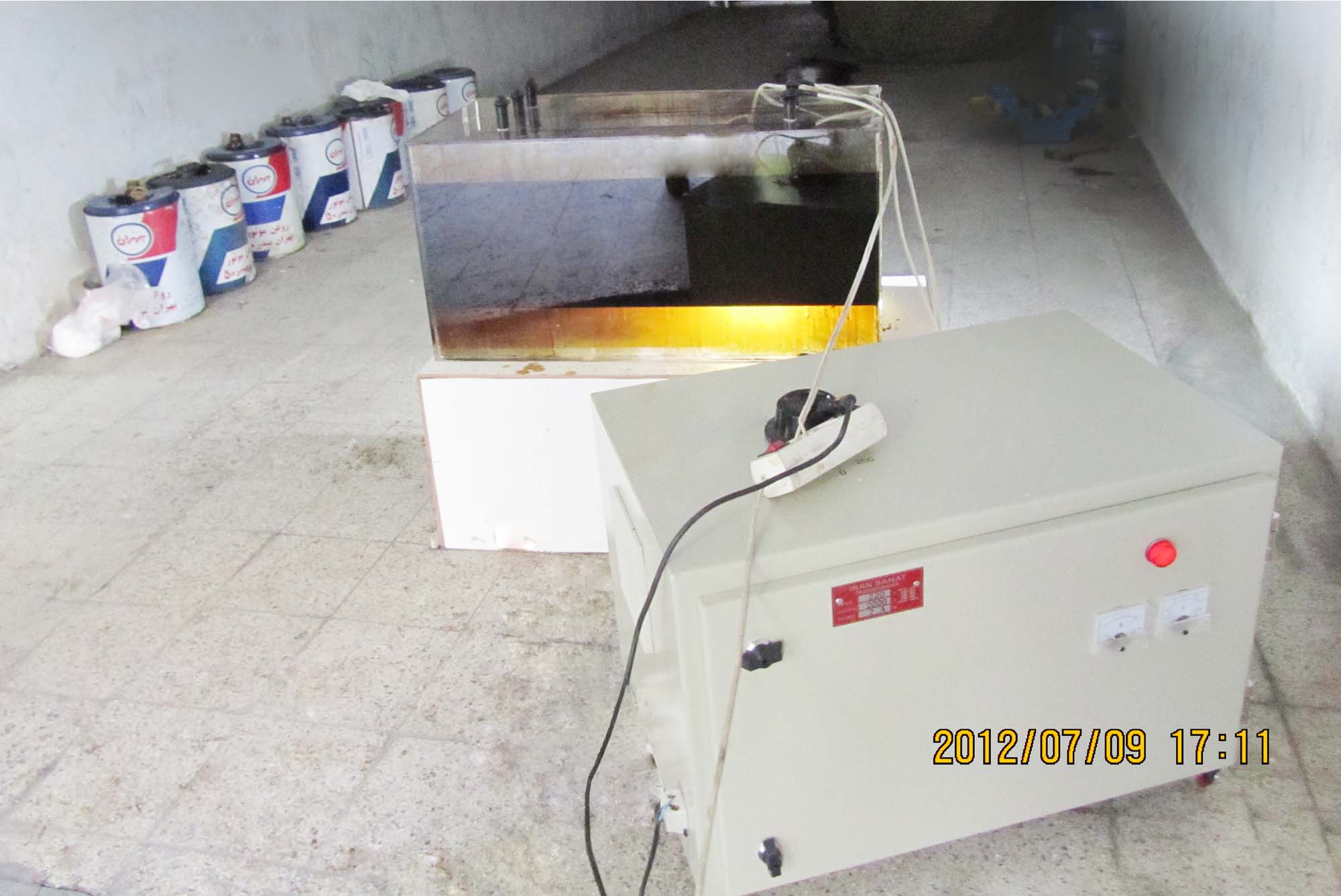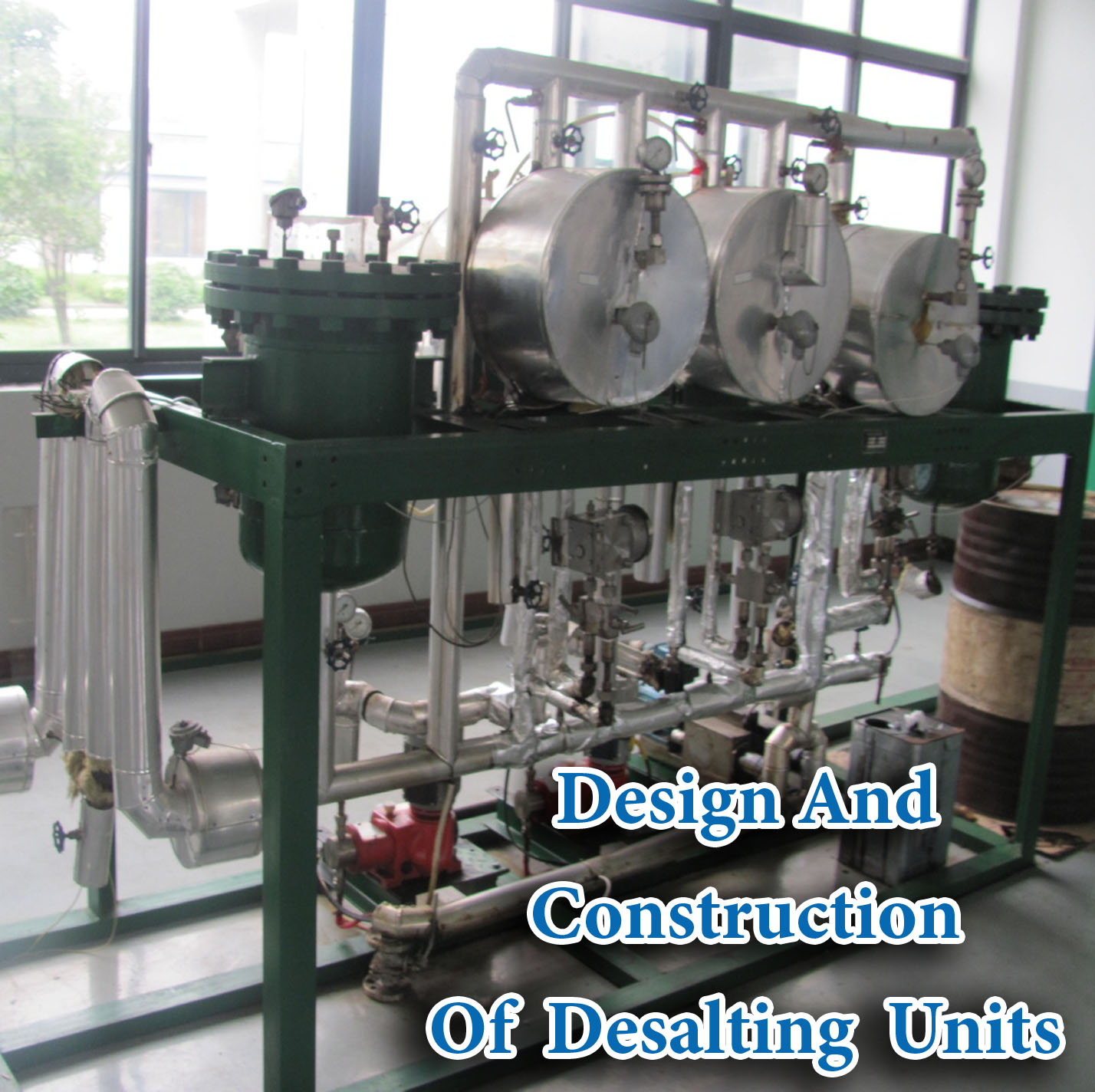Middle East Energy Development Company with the implementation of three national desalination projects for the client of the southern oil-rich regions as follows:
-Construction of Haftkol kerosene desalination unit (6992-73-53)
– Construction of Gachsaran 3 desalination unit (6521-73-53)
– Preliminary engineering studies and preparation of FEED engineering package for the construction of Gachsaran 4 desalination unit (1253-71-53)
Also, conducting numerous studies and experiments in the field of desalination of crude oil in its research center has valuable experiences in carrying out these projects.
Along with crude oil, there is often some emulsified water that must be separated from the crude oil. Most water with crude oil contains salts that interfere with refining processes.
Crude oil often contains sodium and magnesium chlorides, some sulfate, silica and iron oxides, and even if they do not contain these compounds at the exit of the tanks, these salts enter the crude oil during transportation, especially by ship.
The most abundant chloride is sodium chloride (NaCl). Calcium and magnesium chlorides are in the next order. These salts are found in virtually all waters associated with crude oil. Salts are rarely present in crude oil (organic phase), but if they are present in this case, they are present suspended and not dissolved.
In almost all cases, the salt in the crude oil is dissolved in small droplets of water dispersed in the crude oil. Chlorides and sulfates are soluble in small drops of water suspended in crude oil. The number of salts varies, for example in the Middle East oil is about 12 ppm, while in the case of Iranian oil it reaches 300,000 ppm.
Because of salt problems, most refineries buy crude oil that is between 10 and 20 pounds per 1,000 barrels of salt and then desalinate it to 5 pounds per 1,000 barrels before it is sent to the distillation unit. they do.
If the number of solutes in the crude oil is more than 10 pounds (equivalent to 4.5 kg) per thousand barrels in terms of sodium chloride (means a concentration of about 28.55 mg / L), the salt must be desalinated. Less than this amount is also desalinated because salt deposition causes scale and corrosion in facilities and contamination of catalysts used in various refining processes. The basis of the desalination method is the dissolution of solutes in crude oil by water. The difficulty of this method is in preparing an effective mixture of water and oil, wetting solid particles and separating the washing water from the crude oil. Various factors have affected the efficiency of the desalination process, including the pH, density and viscosity of crude oil and the volume ratio of washing water to crude oil.
Reasons for desalination
The amount of salt is particularly important in relation to corrosion. When crude oil is distilled, the chloride salts decompose to produce hydrochloric acid, which has severe corrosive effects.
The results of experimental work show that the formation of hydrochloric acid does not increase linearly with the amount of chloride salts in crude oil. The amount of 290 ppm of salt in crude oil produces 23 to 43 ppm of hydrochloric acid. Due to the corrosive effects of relatively small amounts of salt, the goal of desalination is to reduce the salt content to a minimum. In many refineries, crude oil is desalinated to less than 10 ppm.
Other detrimental effects that can result from inadequate desalination are the deposition and clogging of transducers, furnace tubes, and bottom trays of the distillation tower. Calcium and magnesium carbonates and calcium and strontium sulfates precipitate on heat exchange surfaces. These sediments reduce heat capacity and efficiency.
Another function of the desalination tank is to remove impurities such as sand, mud, iron oxide, iron sulfate, arsenic and… crude oil.
Some metals present in inorganic compounds dissolved in water emulsified with crude oil can contaminate and inactivate the catalysts used in various refinery catalytic processes, such as cracking, reforming, catalytic alkylation, and so on.
For example, in the catalytic reforming process, which is one of the basic units of any refinery and is done with the aim of increasing the octane number of gasolines, cream, molybdenum and cobalt oxide catalysts were initially used, but since 1949, more active platinum catalysts have been used on an acid basis. These catalysts are two factors, namely that both the metal and the acidic base have an effective role in activating the reactions. Commercial catalysts usually contain 0.3 to 0.7% by weight of platinum, which are dispersed as very fine particles on the base. Reforming catalysts are very sensitive to impurities and are toxic.
Other goals of the desalination process are to remove suspended solid particles such as sand, clay, iron oxides and solids and… in crude oil. In this case, depending on the particle size, the removal percentage should be between 60 or higher to 80%.
Description of the desalination process
As mentioned, salt is usually soluble in water and salt crystals are found in only a small number of crude oils. The desalination tank is responsible for removing both aqueous solutions and water-soluble salt crystals.
The mixing of crude oil and washing water is controlled by a mixing valve. After mixing, the added wash water should be completely separated in the desalination tank as much as possible. This can be done either electrically or chemically.
In the desalination tank, the water-oil emulsion is exposed to a high voltage electric field. This field breaks the oil layer around the individual water droplets to allow a number of water droplets to combine with each other. Larger water droplets with higher specific gravity are directed to the bottom of the desalination tank and exit with a stream of water.
There is a valve in the outlet water flow path which is continuously controlled by a joint water and oil level controller (chapter). The size, stability, and distribution of emulsion components are determined by specific gravity, surface tension, chemical impurities, or contaminants in crude oil and water. Water level controllers warn when the water level is below the allowable level to prevent crude oil from escaping along with the effluent from the desalination plant. The water level is controlled using an automatic valve located in the outlet of the effluent.
Desalination tanks are made of carbon steel and their dimensions are based on various factors such as crude oil characteristics such as density, viscosity, water and chloride content, crude oil flow rate, operating pressure and temperature, quality and quantity of available process water and desired performance Determined from desalinated crude oil.
Substances that affect the surface, such as asphalt, resins, waxes, solids, clay, or organic acids found in crude oil, can act as emulsion stabilizers. Therefore, the desalination plant must be able to break down the most complex emulsions. The amount of desalination depends on the desalination design and operating conditions.
For example, electric desalination plants manufactured by Petro lite Company (installed in Tehran Oil Refinery) have steel electrodes that are powered by high voltage converters (transformers). The alternating field created between the electrodes separates the oil-water emulsion. The arrangement of the electrodes is such that the emulsion is evenly distributed between them. After the removal of water-soluble salts and impurities from the crude oil, the existing aqueous and organic phases are separated precisely due to the shape of the electrodes. Therefore, the proportion of salt water in crude oil is refined and in contrast the ratio of crude oil in output water is reduced to a minimum that is economically reasonable.
The rinsing water (water that has a small number of impurities) is dispersed in the crude oil in a special mixing valve that breaks the water into very fine droplets. If washing water (process water) is not added, the water droplets in the crude oil will not be sufficient for cohesion. Adding process water increases the total water volume in the crude oil and allows the impurities to separate through the electrostatic interconnection process of the water droplets.
These water droplets come in contact with many water-soluble impurities such as clay and mud in crude oil. The water-oil mixture is directed into a desalination tank in which the mixture enters an electric field at a very high speed. The electric field separates water and oil. Process water droplets combine with saline water droplets to form larger droplets that are separated from crude oil by high field voltage and gravity. This process is called electrostatic interconnection.
Different desalination methods
Two common methods of desalination of crude oil are:
Chemical separation (desalination)
Electrostatic separation
Also, there is a third method that is less useful than the above two methods:
Crushing oil
In both methods, hot water is used as a separating agent. In chemical separation, water and surfactant are added to the crude oil and then heated. As a result, salts and other impurities are dissolved in water and separated from crude oil in a settling tank after a certain period of time.
More effective method,
Electrostatic separation, which will be fully described in the next section. While desalination is possible with most methods used to break emulsions, most desalination systems use the electrostatic method to obtain the least amount of water in the oil and thus reduce the amount of diluent water.
In this method, a high voltage electric field is used to accelerate the droplets joining and settling. In this method, demulsifies are added only when the crude oil contains large amounts of suspended solids.
The third and most common method is to filter heated crude oil using diatomaceous earth.
Surveys conducted in the Middle East Energy Development Company with a pilot device made in the company:
1- The effect of operating conditions on the efficiency of the desalination process
2- The effect of temperature and electric field intensity
3- Investigating the effect of emulsifier concentration
4- The effect of the amount of washing water
5- The effect of emulsifier composition structure on desalination efficiency of crude oil
6- Investigating the effect of DA type emulsifier
7- The effect of DB series emulsifiers
8- The effect of DC series emulsifiers
9- The effect of Assistant compound on desalination of crude oil


